Description
CYT3 Overview
This product is a combination of three ingredients
Clenbuterol Hydrochloride 40 mcg
Yohimbine Hydrochloride 5 mg
Liothyronine Sodium 40 mcg (Tetroxin T3)
Clenbuterol History and Overview
Clenbuterol is not an anabolic steroid, but rather a stimulant that belongs to a classification of compounds known as sympathomimetics. This classification (or ‘family’) contains other compounds that the average person might be more familiar with, such as: caffeine, ephedrine, albuterol, amphetamines, cocaine, and many others. It is indeed quite a broad drug category, and each of the compounds in this family are related to each other, and more or less carry many similarities and operate in a similar manner through similar pathways. Clenbuterol’s effect on the nervous system involves its interaction with adrenoreceptors, which are located in many different tissues and cell types in the body. When Clenbuterol binds to these adrenoreceptors, different effects in different tissue types (depending on the tissues stimulated) will manifest. One effect in particular that we are concerned with is Clenbuterol’s effect in adipose (fat) tissue.
There are two different adrenoreceptors in the body – alpha and beta receptors – and within those two different types, there are 9 subtypes. For example, alpha-1, alpha 2, beta-1, beta-2 receptors, etc. The difference between Clenbuterol and other compounds in the stimulant family lie in their different capabilities to stimulate different subtypes, multiple subtypes, or focus on one subtype. Clenbuterol in particular I known for its very strong and almost exclusive stimulation of the beta-2 adrenoreceptors, and therefore this is why Clenbuterol is commonly referred to as a beta-2 receptor agonist. It is within fat tissue that, when beta-2 receptors are stimulated by Clenbuterol, initiate lipolysis (the breakdown of fat into free fatty acids). It has gained plenty of popularity among just bodybuilders and athletes because of this, but among entertainment celebrities, and by proxy, common people looking to drop a few pounds of fat.
Clenbuterol’s original use as a medicine in the prescription drug market was (and still currently is) as a bronchodilator in the treatment of asthma. It is most frequently administered in this manner in asthma inhalers as the primary active drug in the inhaler. The use of Clenbuterol as an asthma medication is primarily a European medical practice, and in North America, Clenbuterol’s close sister compound Albuterol is utilized instead. Upon activation of beta-2 receptors in the cell lining of the bronchial tubes, it will initiate bronchial dilation (opening and expansion of the airways) in the lungs, nose, and throat. Almost all sympathomimetic stimulants exert this effect, but Clenbuterol and Albuterol are highly effective in particular for this purpose. Clen has also been used medically in the treatment of other conditions, such as hypertension, cardiovascular shock or slowdown, heart arrhythmias, migraine headaches, allergic reactions and swelling, histamine reactions, and anaphylactic shock.
Although Clenbuterol is a beta-2 receptor agonist, it does exhibit effects on other receptor subtypes as well, with emphasis on the beta-2 subtype. By comparison, Ephedrine is known for stimulating multiple beta and alpha receptors by an equal degree rather than stimulation of one receptor subtype by a large degree. Clenbuterol is said to be anabolic in muscle tissue by many in the bodybuilding community. The truth is that Clenbuterol is only minimally anabolic in muscle tissue, and that this has primarily been found to be the case in animals rather than humans (which also requires a long period of use before any of these effects rise to any semblance of a measurable level)[1].
One important point of note is that through continued consistent use, Clenbuterol will downregulate beta-2 receptors in the body in response to its stimulation of those receptors[2], and it occurs very quickly. The manifestation of this effect is diminished fat loss during use until the fat loss reaches a complete stop. There are two methods of remedying this effect. The first is to introduce time off from use of the drug (2 weeks minimum). The second is through the use of Ketotifen Fumarate, an anti-histamine drug that is known for upregulating beta-2 receptors[3]. Benadryl has been rumored to have the same effects as Ketotifen Fumarate on beta-2 receptors, but this has found to be simply untrue because although Benadryl is an antihistamine like Ketotifen, it operates on a very different pathway.
Clenbuterol Cycles and Uses
Clenbuterol is most commonly utilized in cutting, pre-contest, and fat loss cycles. It is very rarely utilized during the off-season or during bulking phases. Some small fraction of Clenbuterol users might elect to use it during bulking phases in a (mostly vain) attempt to stave off fat gain during a bulking period where caloric consumption is much higher than usual, and normally above basal metabolic levels. The truth of the matter here is that those who elect to do this are essentially wasting time and money, as the mechanics of Clenbuterol do not even provide for this effect. As previously explained, Clen is responsible for binding to receptors on fat cells and initiating lipolysis, which is the process of the release of triglycerides stored in fat cells into the blood stream as free fatty acids. These free fatty acids then circulate around the bloodstream throughout the body, and they must undergo the second stage of fat loss: fatty acid oxidation. This means the fatty acids must be shuttled into cells and into the mitochondria to be ‘burned’ off, which cannot occur in any significant amount if caloric consumption is too high.
Clenbuterol cycles can either be run solitarily (with no other compounds) on its own, or stacked with other compounds. Whether or not it is run alone does not change the manner in which Clenbuterol cycles are run. This means that Clenbuterol is either used in the 2 weeks on / 2 weeks off protocol (or for 8 constant weeks with the use of Ketotifen every second week). It is recommended that Clenbuterol not be utilized for more than a 12 week period in order to ensure the body’s cardiovascular and other systems receive an adequate rest from the compound.
Clenbuterol Dosages and Administration
As an asthmatic medication in the treatment of asthma, Clenbuterol dosages are in the range of 20 – 40mcg per day.
In order to achieve any significant amount of fat loss, the peak Clenbuterol dosage that individuals should eventually titrate up to should be 120 – 160mcg per day. Females may be able to only tolerate less, in the range of 80 – 100mcg per day.
Whether or not the user is a male or female, the dosage must be slowly titrated (or ‘ramped up’) to the peak dosages mentioned. This means that, for example, an initial starting dosage would be 40mcg of Clenbuterol for the first 3 days, and on the 4th day of the cycle, the Clenbuterol dosage is increased by another 20mcg (now for a total of 60mcg per day), and 3 days later it is increased again, and so on and so forth. Some individuals can tolerate a quicker titration upwards, and others may require a slower steady increase.
Titration downwards is not necessary when ending Clenbuterol use, though some have a personal preference for it.
Clenbuterol exhibits a half-life of approximately 37 hours, so all Clenbuterol dosages should ideally be consumed at once in the morning. There is no requirement to spread the Clenbuterol dosages throughout the day, and this would in fact cause worse insomnia and sleep disturbances.
How to Buy Clenbuterol
Clenbuterol is one of the most common fat loss agents in existence and is one of the easiest and most common compounds to buy on the black market (or even legally as a research chemical).
Pharmaceutical grade Clenbuterol can range from $0.4 – $1 per tablet which is dependent on which pharmaceutical company’s products are purchased. Nearly all Clenbuterol tablets that are pharmaceutical grade are supplied in 20mcg tablets. It is not uncommon to see underground products dosed at 40mcg, 50mcg, and even 100mcg tablets with prices ranging from $0.4 – $2 per tablet.
Research grade products manufactured by research chemical companies are almost always liquid products supplied with a dropper, or an oral syringe, or spray pump (where each spray is commonly measured to be approximately 20mcg per spray). Concentrations of Clenbuterol solutions in these liquid products are commonly 200mcg per ml in a 30ml bottle, with the price ranging from $40 – $80 per bottle (and dependent on which company it is purchased from).
Due to laws in the United States, you can buy Clenbuterol widely for research purposes, but its almost always listed as ‘not for human consumption’.
Clenbuterol Information:
Clenbuterol (AKA Spiropent, Ventipulmin)
Chemical Name: (RS)-1-(4-Amino-3,5-dichlorophenyl)-2-(tert-butylamino)ethanol
Molecular Weight: 277.19 g/mol
Formula: C12H18Cl2N2O
Original Manufacturer: N/A
Half Life: 36 – 48 hours
Detection Time: 4 – 5 days
Anabolic Rating: N/A
Androgenic Rating: N/A
Yohimbine Hydrochloride History and Overview
Recently yohimbe, or more accurately, its active ingredient yohimbine, has been the subject of some heated debates among fitness enthusiasts and industry insiders alike. While it was originally considered a flop of a supplement, because it did not increase testosterone levels as first suspected, it had developed a bit of a cult following by some men for its reported ability to increase support sexual health.
However, some supplement manufacturers have recently claimed that it can also aid in the loss of “stubborn fat.” You know; those areas that just won’t lean out no matter how hard you diet and exercise. Typically, these areas are located in the midsection of men, and on the glutes and thighs of women.
With all the claims and hype being thrown around, we asked our own resident supplement expert Dan Gastelu to do a little reading on what the current research says, and shed some light on the subject for us.
Currently, yohimbe bark is mostly found being used in male aphrodisiac preparations, but some supplement manufacturers have claimed that it can aid fat loss as well. Yohimbe is a small evergreen tree native to Africa, and the scientific name is Pausinystalia yohimbe. Chemically, Yohimbe bark contains a substance called yohimbine, plus additional similar compounds, known as indole alkaloids.
Medically, yohimbine is a pre-synaptic alpha-2-adrenergic blocking agent, also referred to as an alpha 2-adrenergic antagonist. This action increases sympathetic nervous system activity, and can result in increasing the amounts of epinephrine (also known as adrenaline) and norepinephrine in the blood stream. The sympathetic nervous system is involved in controlling the body’s response to stress, and also triggers the fight or flight response.
The main effects epinephrine and norepinephrine have on the body include increasing blood pressure and heart rate. Paradoxically, in low dosages yohimbine may help support healthy blood pressure already in normal range. This is thought to occur by causing dilation of blood vessels, thereby reducing vascular resistance. This central nervous system stimulation causes anxiety in some people.
Yohimbine For Supporting Sexual Health
In the 1960’s, studies were conducted using a combination supplement called Nux Vomica, which contained yohimbine and methyl testosterone. Nux Vomica was found to be effective after 2 to 3 weeks of use in most cases, various side effects were observed (see below). Keep in mind, however, no conclusive studies using the botanical Yohimbe have been published which show the same effects. Researchers E. Ernst and M.H. Pittler recently reviewed several studies concerning the use of the supplement yohimbine for erectile dysfunction.
Serious side effects observed in these short-term studies were infrequent and reversible. Side effects reported using yohimbine include: nervousness, irritability, insomnia, headache, skin flushing, anorexia, nausea, gastric distress, diarrhea, vomiting, palpitations, tachycardia, dysuria, pain, increased blood pressure, dizziness, sweating, weight gain, constipation, and anxiety. Always consult your doctor when using yohimbine-containing products.
Do not use while taking any medications, or if other medical problems exist, such as; angina pectoris, depression, other psychiatric illness, heart disease, high blood pressure, kidney disease, or liver disease. Do not exceed the recommended dosage for Yohimbine, as an overdose could, in extreme cases, result in death.
Generally, yohimbine is not recommended for use by females for libido enhancement, and certainly is not to be used during pregnancy. [Note that a group of researchers conducted a study using yohimbine in women with decreased libido, and observed that the yohimbine supplementation was not effective in supporting their sexual health.]
Yohimbine And Weight Loss
The use of yohimbine for weight loss is inconclusive, and in this author’s opinion not to be recommended due to the potential side effects. Some research has been conducted, and some of the key studies will be reviewed below. Keep in mind, though, that just because investigators have conducted research on using the supplement yohimbine, does not mean that such studies should automatically be used to endorse the self-prescribed use of this supplement.
Alpha-2 receptors are common in sites of the body that tend to preferentially accumulate fat; abdomen, breasts, buttocks and thighs. When exposed to circulating catecholamines, such as norepinephrine and epinephrine, alpha-2 receptor sites inhibit lipolysis (the release of fatty acids), while the beta receptors stimulate lipolysis. Generally speaking, epinephrine, norepinephrine, glucagon, adrenocorticotropic hormone (ACTH), and growth hormone stimulate the release of fatty acids from adipose tissue into the blood stream. Once in the blood stream, fatty acids are usually rapidly oxidized if the fatty acid blood concentration is not elevated from fatty acid input resulting from a meal.
Generally, when fatty acid blood concentration is high, it favors fat storage, which results from over-eating and inactivity. Although, keeping in mind that fatty acids are always used for energy, it is the balance between the amount of fatty acids ingested versus their use for energy that determines how much ends up stored as fat. Of course, this is a rather simplistic explanation of fatty acid metabolism. There is much more involved in these fat storage/utilization dynamics, and those who want more insight on these dynamics should click on the link below to get more information on ISSA’s SPN course book. In that book, I am able to delve into these dynamics in much more detail.
Hypothetically speaking, blocking the alpha-2 receptors might be useful during weight loss to free up the catecholamines like norepinephrine, making more available to stimulate beta receptor sites, resulting in a higher rate of lipolysis. Also, yohimbine, through its alpha 2-adrenergic receptor antagonist activity, has been shown to increase levels of norepinephrine in the blood stream.
Galitzky and coworkers observed during their 14-day study of yohimbine treatment that lipid-mobilizing effects were sustained during this study period. This research collaborated their earlier observations found using yohimbine as a lipid-mobilizing agent, as well as from the research of Lafontan and coworkers.
Is Yohimbine An Effective Weight Loss Aid?
Kucio and coworkers conducted research looking for answers to this very question. In their research report, titled, “Does yohimbine act as a slimming drug?” they found an interesting answer. In this study, twenty female subjects were first subject to a 3 week 1,000 Calorie per day diet. After this 3 week period, 10 subjects were given yohimbine and the other 10 were given a placebo for three additional weeks, in addition to the 1000 Calorie per day diet.
They found that the yohimbine treatment significantly increased weight loss; 3.55 kilograms body weight lost in the yohimbe group versus 2.21 kilograms body weight lost in the placebo group. However, there was not a significant effect on lipolysis observed, nor did treatment with yohimbine delay the gastric emptying rate. Keep in mind that while over two pounds more weight was lost by the yohimbine taking group, there were no measurements of where the weight was lost, body fat or muscle, and that these results were observed in sedentary females, eating 1000 Calories per day.
Also, there are other nutritional aids that can result in greater weight loss, with fewer or no side effects. The researchers concluded that further research is warranted to determine the applicability of using alpha 2-receptor inhibitory supplements as supplementary management in the treatment of obesity.
Waluga and coworkers went on to examine what the combined effects of caffeine and yohimbinewere on cardiovascular function and rate of weight loss. To do this they divided twenty-seven healthy women, into three groups of 9. The first group received only a very low calorie diet (400 Calories per day) and a placebo. The second group received the same diet, and caffeine supplement treatment. The third group received the same diet, and caffeine treatment used in group 2, plus yohimbine.
The treatment lasted for 10 days. At the end of the study the researchers observed a significant reduction in body mass in all groups, with no statistical difference between the groups; Group 1 lost 3.3 kilograms of body weight, group 2 lost 3.5 kilograms of body weight, and group 3 lost 3.4 kilograms of body weight. Although no significant results were seen between the groups, the researchers pointed out that this study was only 10 days long, and that the subjects were on a very low calorie diet, which may have distorted any weight loss effects of the supplements, or was too short to distinguish the real effects reported by other researchers.
However, the main aim of the study was to determine adverse effects of the supplement treatment on the cardiovascular system, and in fact, the researchers did determine that the inclusion of yohimbine along with the caffeine, did evoke some potentially dangerous changes in the cardiovascular system. They concluded that the addition of yohimbine should be treated with caution, and must be excluded in particular obese individuals with cardiovascular complications.
Overview and History of Liothyronine Sodium 20 mcg (Tetroxin T3)
Cytomel is a brand and trade name for T3, which is Liothyronine Sodium. Liothyronine Sodium is a synthetic variant of the human body’s own thyroid hormone. It should be understood that the human body’s own natural endogenously manufactured thyroid hormone is actually known as Triiodothyronine, which is different from Liothyronine Sodium. Liothyronine is the L-isomer of Triiodothyronine. Liothyronine and Triiodothyronine are both nearly identical with one another, but Liothyronine is a more potent variant and is also better absorbed orally, which is why it has been developed into a prescription medicine and preparation known as Cytomel, Tiromel, Tertroxin, etc. Within a medical and clinical setting, Cytomel (T3) is utilized in the treatment of hypothyroidism, which is a condition whereby an individual’s thyroid gland is not secreting the proper and normal levels of thyroid hormone for proper function. In such a case, hypothyroidism is commonly diagnosed via a blood test that analyzes the serum hormone profile of thyroid hormones (T3, T4, and TSH, which is Thyroid Stimulating Hormone). Hypothyroidism also carries with it various symptoms such as a lack of energy, lethargy, weight and fat gain, hair loss, and alterations in skin colour and texture. T3 is the primary thyroid hormone used by the body.
Unfortunately, T3 is one of those compounds among the bodybuilding and athletic community that has gathered a large amount of mysticism, rumor, and lies that have been spread for years in regards to what it does, its use, and how it should be used. As a result, many within the anabolic steroid using community have become deathly afraid of T3, and shudder at the mere mention of its use. This profile will set these misconceptions straight and clarify many of the common misconceptions in regards to Cytomel.
T3 was originally formulated as a medicine by way of an extract from the thyroid gland. Many hormonal medicines originated in the same way, as being derived from the endocrine glands from the cadavers of animals and humans. The very first application of this thyroid extract was administered in 1981 to an individual who suffered from myxedema, which is a skin disorder that is normally the result of hypothyroidism[1]. Thyroid hormones were some of the very first hormonal medicines used in the field of endocrinology and in the treatment of many disorders and diseases. The very first thyroid extracts not only contained T3, but also T4, and these extracts were utilized for over 60 years in medicine. In the 1950s, methods of creating thyroid hormones synthetically took over and the previously used thyroid extracts were done away with. Liothyronine Sodium (T3) and Levothyroxine Sodium (T4) are the two most popular currently used synthetic thyroid hormones, and are widely available both in the United States as well as internationally. Cytomel tends to be the most widely utilized and most recognized brand name of T3, especially in the United States. In The USA, Cytomel is manufactured by King Pharmaceuticals.
T3, much like many other ancillary bodybuilding drugs is widely available with very little or no laws in regards to its sale, distribution, purchase, or use in most countries throughout the world. It is manufactured by dozens of different pharmaceutical companies across the world with different brand and trade names, as well as a diverse selection of generic T3 products. Because of the vast availability and manufacture of this product, it is not uncommon to find a wide variation in different T3 dosages in the different products. For example, T3 can commonly be seen in concentrations ranging from 5mcg, 25mcg, and all the way up to 50mcg tablets.
Chemical Characteristics of Cytomel (T3)
T3 (Liothyronine Sodium) is a synthetic variant of the body’s thyroid hormone Triiodothyronine.
Properties of Cytomel (T3)
T3 in the body is responsible for regulating the uptake of various nutrients into cells and into the mitochondria of those cells in order to effectively become utilized for the production and consumption of energy[2] [3]. The mitochondria of every single cell in the body utilizes carbohydrates (primarily), fat, and even protein for the production of an energy source known as ATP (Adenosine Triphosphate). Through the intake of more T3, this production of ATP will increase, leading to an increased rate of energy consumption in the form of fats, carbohydrates, and protein. Hence, this is why the consumption of too much T3 without the use of anabolic steroids can result in muscle loss.
The bodybuilding and athletic world is attracted to the use of T3 as a physique and/or performance enhancing drug because of its capability to distinctly boost the body’s metabolism in the effort to metabolize body fat at a greater rate. T3 is traditionally utilize during cutting, dieting, and/or pre-contest phases of training due to the universal goal of these phases to break down body fat, though in recent years Cytomel has gained some popularity as a useful agent during bulking and mass gaining phases of training (normally in conjunction with anabolic steroids) in order to better efficiently process nutrients and/or to keep body fat levels down during periods of higher caloric intake. Cytomel (T3) is commonly used with anabolic steroids due to its significant impact on the body’s metabolism as a whole. It is very important to understand that T3 is indiscriminate in its metabolism boosting properties – it will increase the metabolism of fats, carbohydrates, and protein all equally. Therefore, beyond a particular dose of T3, there is an increased risk of muscle loss through increased turnover of protein. Through the use of anabolic steroids and a properly adjusted diet, this muscle loss as a result of T3 can be prevented as a result of the nitrogen-retaining and protein sparing properties of theanabolic steroids.
Cytomel (T3) is also commonly combined with other fat loss agents in order to increase its overall effect, as it does work synergistically with other fat loss agents. Some of these include Ephedrine, Clenbuterol, Albuterol, Human Growth Hormone (HGH) as well as other fat burning agents. The combination of T3 with anabolic steroids and other fat burning agents, as well as the possible interactions between them, will be further covered in greater detail in the Cytomel (T3) Doses and Cytomel (T3) Cycles sections of this profile.
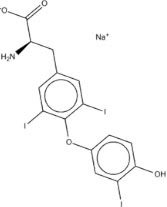 Liothyronine Sodium (AKA Cytomel, T3, Tertroxin, Tiromel, Thyroid hormone)
Liothyronine Sodium (AKA Cytomel, T3, Tertroxin, Tiromel, Thyroid hormone)
Chemical Name: sodium (S)-2-amino-3-[4-(4-hydroxy-3-iodophenoxy)-3,5-diiodophenyl]propanoate
Molecular Weight: 672.96 g/mol
Formula: C15H11I3NNaO4
Original Manufacturer: ICI
Half Life: 2.5 days
Detection Time: Cannot be detected via urinalysis
Anabolic Rating: N/A
Androgenic Rating: N/A




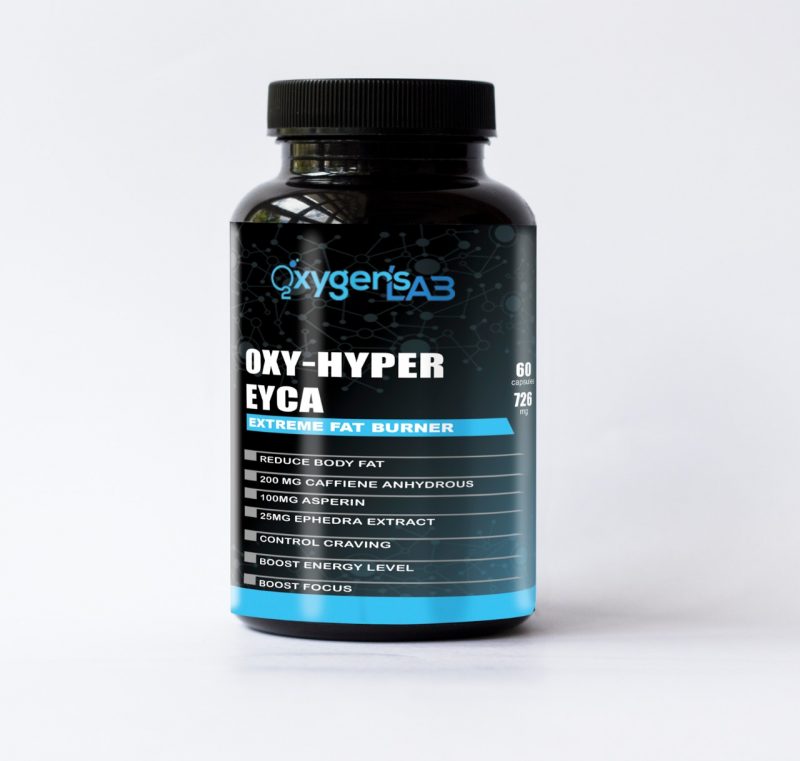

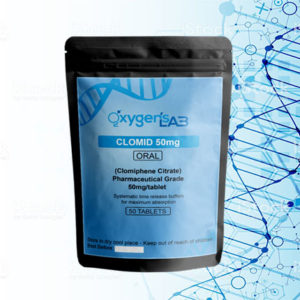

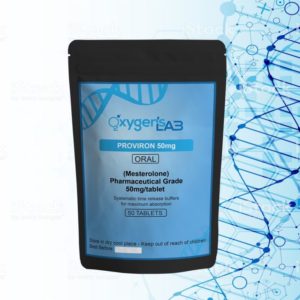
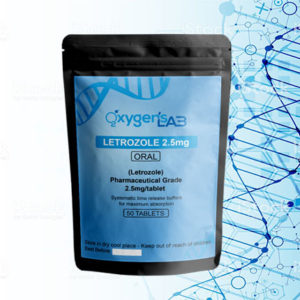
Reviews
There are no reviews yet.